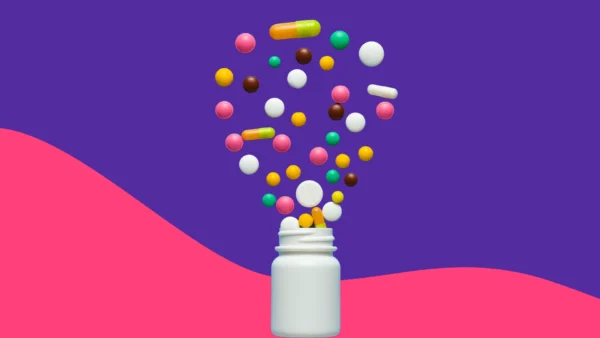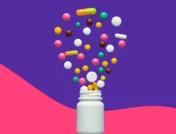As a pharmacist, you are likely well aware of what the Drug Enforcement Agency (DEA) calls your “corresponding responsibility” in section Title 21 of the Code of Federal Regulations. The law states that a pharmacist must only fill a prescription for a controlled substance when it is issued for a legit medical reason by a legitimate practitioner acting within the usual scope of their professional practice. This responsibility can weigh heavily on pharmacists as they make decisions involving patients’ controlled substance prescriptions in daily practice.
Definition of a controlled substance
The United States Drug Enforcement Agency (DEA) is the government agency responsible for regulating controlled substances at the federal level. The DEA defines a controlled substance as a drug or chemical known to be addictive or habit-forming. Examples of controlled substances include opioids, central nervous system (CNS) stimulants, CNS depressants, hallucinogens, and anabolic steroids.
Community pharmacists are essential in ensuring patients take their controlled substances as intended. As the last healthcare professionals to interact with a patient before they take the drug, pharmacists play a critical role in ensuring patients know how to take their medications appropriately. Pharmacists and pharmacy technicians must remain vigilant to recognize an issue involving a controlled substance prescription.
Pharmacists are like caring gatekeepers. It’s your job to know the rules for prescribing controlled substances and the regulations for ordering, storing, dispensing, and recordkeeping of controlled substances—while ensuring that patients understand the risks associated with the medication.
Controlled substance categories
The DEA categorizes controlled substances into different schedules based on their potential for abuse and addiction, with Schedule I having the highest risk and Schedule V having the lowest risk.
The chart below summarizes the DEA’s definition of controlled substance schedules and lists common examples.
| Schedule | Definition | Examples |
| Schedule I or C-I
(Roman numeral one) |
Not accepted for any medical purpose and have a high potential for abuse (illicit drugs) | heroin, lysergic acid diethylamide (LSD), marijuana (cannabis), peyote |
| Schedule II or C-II (Roman numeral two) | High potential for abuse and may cause severe psychological or physiological dependence | amphetamines, fentanyl, morphine, hydrocodone, oxycodone |
| Schedule III or C-III (Roman numeral three) | Abuse potential is lower than that C-I or C-II drugs and use may lead to moderate to low physical dependence or high psychological dependence | anabolic steroids, ketamine, combination codeine/acetaminophen |
| Schedule IV or C-IV (Roman numeral four) | Low potential for abuse compared to the above schedules | alprazolam, carisoprodol, clonazepam, lorazepam |
| Schedule V or C-V (Roman numeral five) | Low potential for abuse compared to C-IV substances and usually contain limited quantities of certain drugs | cough medicines that contain a limited amount of codeine, such as promethazine/codeine syrup |
A complete list of controlled substances and their respective schedules are in the Controlled Substance Act. Note that some states have different laws or regulations that are more stringent than the federal level; in this case, the stricter law always takes precedence.
Prescription drugs versus controlled substances
Some prescription drugs are controlled substances, but not all controlled substances are prescription drugs. The main difference is that the definition of controlled substances includes prescription and illicit drugs with abuse potential. Here’s a quick knowledge check to help illustrate this difference: Can a healthcare provider issue a prescription for heroin? No. While heroin is a controlled substance, it is not a prescription drug.
However, pharmacists should be aware that even prescription drugs that are not controlled substances, such as quetiapine, carry risks of misuse. Even non-prescription drugs, such as dextromethorphan, have abuse potential. Pharmacy staff should be aware of the signs and patterns of substance use disorder to best help their at-risk patients.
Controlled substances restrictions
Controlled substances have restrictions that govern each step of their manufacturing, distribution, and dispensing. Pharmacists are responsible for ensuring their pharmacy adheres to all restrictions around storing and dispensing these substances.
Pharmacists are responsible for knowing when a controlled substance prescription is warranted and within the scope of a practitioner’s practice. Controlled substance prescribing limits for specific types of healthcare providers, such as nurse practitioners and physician assistants, can vary from state to state.
Further, the expiration date and the number of refills for controlled substances vary from other prescription medications. According to federal regulations:
- A Schedule II prescription may not be filled more than six months from the original issue date, and no refills are allowed.
- A Schedule III, IV, or V prescription expires six months after the original issue date, and a maximum of five refills are allowed.
These restrictions are just a few examples of the many federal and state regulations for pharmacists to keep track of. Still, they are important to ensure that controlled substances are utilized appropriately, minimizing their potential for abuse and misuse.
Because of the added restrictions, patients may feel confused about when and where to refill their controlled substance prescriptions. Pharmacists and pharmacy technicians can educate patients on these rules to ensure they refill their prescriptions accordingly. The prescription label also provides patients with the number of refills, the original date, and the pharmacy phone number if they have questions.
How to help patients with possible substance use disorder
It is not always easy to tell when a controlled substance prescription is invalid or if a controlled substance is being misused, but certain red flags indicate the need for further investigation. Some common red flags include:
- Paying with cash, especially when a patient requests not to use their insurance coverage
- Traveling to a distant pharmacy to fill a prescription, especially on the weekends or late in the evening when it is more difficult to contact the prescriber
- Requesting early refills often
- Having multiple prescriptions for conflicting drugs (like stimulants and depressants) or various prescriptions for similar drugs
- Frequently receiving similar prescriptions from the same healthcare provider for several different patients
Before dispensing a questionable controlled substance prescription drug, pharmacists should reach out to the prescriber to verify the prescription and obtain more information about the patient’s treatment plan. Prescribers and pharmacists should also check the Prescription Drug Monitoring Program (PDMP), an online database used to report the filling of controlled substances in most states.
As a pharmacist, if you think someone may be experiencing a substance use disorder or is involved in illegal activities, you may be the only healthcare professional who notices or offers help. Approach the individual with compassion, and ask if they need help. You can provide the following resources, reassuring them that confidential help is available:
- SAMHSA’s national helpline: 1-800-662-HELP
- National Institute on Drug Abuse Resources
- American Addiction Center resources
What is a controlled substance contract?
A controlled substance contract, also known as a controlled substance agreement (CSA), is a written agreement between a patient using controlled substances and their prescriber. It outlines the risks of taking the drug and sets forth the expectations for the patient-provider relationship. This contract is signed by the patient taking the controlled substance and the provider prescribing it. A CSA for patients usually requires the patient to use only one specific pharmacy to fill their prescriptions and prohibits the use of controlled substances outside of the agreement. Research supports the use of such contracts as they may reduce opioid misuse in primary care practice settings.
Pharmacists play a key role when filling controlled substances for patients with CSAs by reviewing the risks associated with taking the medication as well as when (or if) they are permitted to refill their prescription. Counseling is critical to ensure patients take their medication exactly as prescribed to protect their safety and lower the risk of abuse. Pharmacists can also save lives by offering naloxone whenever appropriate.
Bottom line
Pharmacists are responsible for ensuring providers are prescribing controlled substances appropriately while ensuring patients feel well-equipped to take their medications as prescribed.
As one of the most accessible healthcare providers, pharmacists can aid their patients by providing appropriate counseling, support, and resources regarding the safe and proper use of controlled substances.











